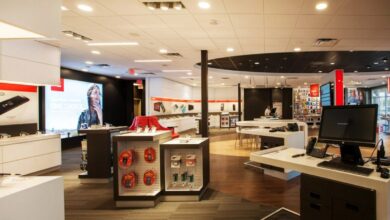B2B Cabinets: 7 Powerful Insights for Smart Business Growth
When it comes to smart office infrastructure, b2b cabinets are more than just storage—they’re strategic assets. From data centers to modular workspaces, these cabinets streamline operations, enhance security, and boost efficiency across industries. Let’s dive into what makes them indispensable in today’s B2B landscape.
What Are B2B Cabinets and Why Do They Matter?

The term b2b cabinets refers to specialized storage and organizational units designed for business-to-business environments. Unlike consumer-grade furniture, these cabinets are engineered for durability, scalability, and integration within professional settings such as offices, industrial facilities, healthcare centers, and IT server rooms.
Defining B2B Cabinets in Modern Business
B2B cabinets aren’t your average filing units. They’re part of a broader ecosystem of commercial infrastructure aimed at optimizing workflow, protecting sensitive equipment, and supporting long-term operational needs. Whether it’s a server rack, medical supply cabinet, or modular office unit, the focus is on functionality tailored to enterprise demands.
- Engineered for high-traffic environments
- Customizable based on industry-specific needs
- Often integrated with smart technology (e.g., access control, IoT sensors)
“In the world of enterprise logistics, the right cabinet can reduce downtime by up to 30%.” — Industrial Design Review, 2023
How B2B Cabinets Differ from Consumer Models
While home or retail cabinets prioritize aesthetics and affordability, b2b cabinets emphasize performance, compliance, and longevity. Materials used are typically commercial-grade steel, aluminum, or reinforced polymers. Build standards follow ISO, OSHA, or HIPAA regulations depending on the application.
- Thicker gauge metals for impact resistance
- Locking mechanisms compliant with security protocols
- Designed for repetitive use under heavy loads
The Evolution of B2B Cabinets: From Storage to Smart Systems
Gone are the days when cabinets were passive storage solutions. Today’s b2b cabinets are evolving into intelligent systems that interact with digital networks, monitor environmental conditions, and even report maintenance needs.
Historical Shift: From Wood to Wireframes
In the early 20th century, most business cabinets were wooden filing units. As industries grew, so did the need for fire-resistant, lockable, and scalable storage. The mid-century introduced metal cabinets, followed by modular designs in the 1980s. With the rise of IT infrastructure, server racks became a dominant form of b2b cabinets, especially in data centers.
- 1900s: Wooden filing cabinets dominate offices
- 1950s: Steel construction improves durability and fire resistance
- 1990s: Rise of server racks and telecom enclosures
The Rise of Smart and Connected Cabinets
Modern b2b cabinets now feature embedded sensors, RFID tracking, temperature monitoring, and remote access controls. For example, smart medical cabinets in hospitals track medication usage in real time, reducing errors and theft. Similarly, intelligent server cabinets monitor heat output and power consumption, alerting IT teams before failures occur.
- IoT-enabled cabinets provide real-time inventory updates
- Access logs enhance audit trails for compliance
- Predictive maintenance reduces equipment failure risks
Companies like Rittal and Schneider Electric lead this transformation, offering smart enclosures that integrate seamlessly with cloud platforms.
Top Industries Using B2B Cabinets Today
The versatility of b2b cabinets makes them essential across multiple sectors. Each industry adapts cabinet design to meet unique operational challenges, from sterility requirements in healthcare to thermal management in data centers.
Healthcare: Secure Storage for Critical Supplies
Hospitals and clinics rely on b2b cabinets to store medications, medical devices, and patient records securely. Automated dispensing cabinets (ADCs) have become standard in pharmacies and nursing stations, improving medication safety and accountability.
- Controlled access prevents unauthorized use of narcotics
- Integration with EHR systems ensures accurate documentation
- Temperature-controlled units preserve vaccine integrity
According to a report by Grand View Research, the global medical cabinet market is projected to grow at a CAGR of 7.2% through 2030, driven by regulatory demands and digital health adoption.
Data Centers: Protecting Digital Infrastructure
In data centers, b2b cabinets take the form of server racks, network enclosures, and power distribution units. These cabinets must manage heat, prevent dust ingress, and support high-density computing hardware.
- 42U standard rack size accommodates multiple servers
- Front-to-back airflow design enhances cooling efficiency
- Lockable doors and side panels ensure physical security
Brands like APC by Schneider Electric offer integrated solutions that combine cabinets with UPS systems and cooling units, creating holistic data protection ecosystems.
Manufacturing and Industrial Facilities
On factory floors, b2b cabinets store tools, safety gear, spare parts, and control panels. They are often built to withstand harsh conditions—dust, moisture, vibration, and extreme temperatures.
- Stainless steel cabinets resist corrosion in food processing plants
- Explosion-proof models used in oil and gas facilities
- Mobile cabinets allow technicians to transport tools across large sites
These cabinets also play a role in lean manufacturing practices, supporting 5S organization principles by enabling clear labeling, easy access, and visual management.
Key Features That Define High-Quality B2B Cabinets
Not all b2b cabinets are created equal. The best ones share a set of core features that ensure reliability, safety, and adaptability in demanding environments.
Durability and Material Standards
High-quality b2b cabinets are constructed from materials that resist wear, corrosion, and tampering. Common materials include:
- Cold-rolled steel: Offers strength and dimensional stability
- Stainless steel: Ideal for hygienic or corrosive environments
- Aluminum: Lightweight yet strong, often used in aerospace or mobile units
Finish types like powder coating or galvanization add extra protection against rust and scratches.
Security and Access Control
Security is a top priority, especially when cabinets store valuable or regulated items. Modern b2b cabinets incorporate:
- Mechanical locks with pick-resistant cylinders
- Electronic keypads or biometric scanners
- RFID or NFC-based access systems integrated with HR databases
In pharmaceutical labs, for instance, dual-authentication cabinets require both a badge scan and PIN entry, ensuring only authorized personnel can access controlled substances.
Modularity and Scalability
One of the most powerful advantages of b2b cabinets is their modular design. Businesses can start with a basic unit and expand as needs grow. Features include:
- Interlocking frames that allow side-by-side installation
- Adjustable shelves and rails for flexible configuration
- Compatibility with accessories like drawers, bins, and lighting
This modularity supports agile workspace planning and reduces long-term capital expenditure.
How to Choose the Right B2B Cabinets for Your Business
Selecting the right b2b cabinets involves more than just measuring space. It requires understanding your operational workflow, regulatory environment, and future growth plans.
Assess Your Specific Needs
Before purchasing, ask key questions:
- What items will be stored? (e.g., electronics, chemicals, documents)
- Who will access them and how frequently?
- Are there environmental concerns (humidity, temperature, vibration)?
For example, a biotech lab storing sensitive reagents will need refrigerated, locked cabinets with audit trails, while an accounting firm may prioritize fireproof document safes.
Evaluate Vendor Reputation and Support
Not all suppliers deliver the same quality. Look for vendors with:
- Certifications (ISO 9001, UL, CE)
- Proven track record in your industry
- Comprehensive warranty and after-sales service
Reading customer reviews on platforms like Gartner Peer Insights or Trustpilot can provide real-world insights into product reliability and support responsiveness.
Consider Total Cost of Ownership (TCO)
While upfront price matters, the true cost of b2b cabinets includes maintenance, energy use, downtime, and replacement cycles. A cheaper cabinet might rust in two years, while a premium model lasts a decade with minimal upkeep.
- Calculate annual depreciation and repair costs
- Factor in energy efficiency for climate-controlled units
- Include training and integration expenses for smart systems
A lifecycle analysis often reveals that higher initial investment leads to lower TCO over time.
The Role of B2B Cabinets in Supply Chain and Logistics
In logistics operations, b2b cabinets serve as critical nodes for inventory management, tool storage, and equipment staging. Their strategic placement can significantly impact warehouse efficiency.
Optimizing Warehouse Organization
Well-designed b2b cabinets help implement lean inventory practices. By organizing small parts, fasteners, or handheld scanners in labeled, accessible units, warehouses reduce search time and picking errors.
- Color-coded bins improve visual identification
- Anti-static cabinets protect electronic components
- Mobile carts enable just-in-time delivery to assembly lines
A study by the Material Handling Institute found that companies using organized cabinet systems reduced material handling time by 22% on average.
Supporting Last-Mile Delivery Hubs
With the rise of e-commerce, urban delivery hubs rely on compact, secure b2b cabinets to store packages before final dispatch. These units often integrate with digital lockers and tracking software, allowing couriers to retrieve orders quickly and securely.
- Modular locker banks for parcel sorting
- Weather-resistant enclosures for outdoor use
- Integration with fleet management systems
Firms like Amazon and UPS have deployed thousands of such units in metropolitan areas, streamlining last-mile logistics.
Future Trends Shaping the B2B Cabinets Market
The future of b2b cabinets is being reshaped by technological innovation, sustainability demands, and changing workplace dynamics.
Integration with AI and Predictive Analytics
Next-generation b2b cabinets will leverage artificial intelligence to anticipate needs. For example, an AI-powered medical cabinet could predict when a drug will run low based on prescription trends and automatically trigger a reorder.
- AI analyzes usage patterns to optimize stock levels
- Predictive alerts prevent out-of-stock scenarios
- Integration with ERP systems enables seamless procurement
This shift moves cabinets from passive storage to active participants in supply chain intelligence.
Sustainability and Eco-Friendly Design
As businesses commit to ESG goals, manufacturers are rethinking b2b cabinets with sustainability in mind. This includes:
- Using recycled steel and non-toxic coatings
- Designing for disassembly and recyclability
- Reducing packaging waste and carbon footprint in shipping
Companies like Steelcase have introduced carbon-neutral product lines, appealing to environmentally conscious buyers.
Adapting to Hybrid Work Models
With remote and hybrid work becoming standard, b2b cabinets are evolving to support flexible office layouts. Modular, reconfigurable units allow companies to adapt spaces quickly as workforce needs change.
- Mobile cabinets for hot-desking environments
- Lockable personal storage for shared workspaces
- Integration with desk booking systems
This flexibility ensures that physical infrastructure keeps pace with digital transformation.
Common Challenges and How to Overcome Them
Despite their benefits, implementing b2b cabinets isn’t without challenges. Businesses often face issues related to space, integration, and user adoption.
Space Constraints in Urban Offices
In densely populated cities, office space is at a premium. Large cabinets can feel intrusive. The solution lies in vertical storage, wall-mounted units, and multi-functional designs.
- Use ceiling-height cabinets to maximize vertical space
- Install sliding or rotating mechanisms to save floor area
- Choose slim-profile models for narrow corridors
Integration with Existing IT Systems
Smart cabinets often require integration with HR, inventory, or security platforms. Poor API support or outdated software can hinder deployment.
- Choose vendors offering open APIs and SDKs
- Test integration in a pilot environment before full rollout
- Ensure compatibility with existing access control systems
User Training and Change Management
Employees may resist new cabinet systems, especially if they involve digital interfaces or new procedures.
- Provide hands-on training sessions
- Create quick-reference guides and video tutorials
- Appoint internal champions to drive adoption
Successful implementation depends as much on people as on technology.
What are b2b cabinets used for?
B2B cabinets are used for secure, organized storage in business environments. Common applications include storing medical supplies in hospitals, housing servers in data centers, managing tools in factories, and organizing documents in corporate offices. They are designed to meet durability, security, and compliance standards required in professional settings.
How do smart b2b cabinets work?
Smart b2b cabinets are equipped with sensors, access controls, and connectivity features. They can track inventory levels, monitor environmental conditions, log user access, and send alerts via Wi-Fi or cellular networks. Some integrate with enterprise software like ERP or EHR systems for seamless data flow.
Are b2b cabinets customizable?
Yes, most b2b cabinets are highly customizable. Options include size, material, locking mechanisms, shelving configurations, and integration with digital systems. Many manufacturers offer bespoke solutions tailored to specific industry needs or spatial constraints.
Which industries benefit most from b2b cabinets?
The healthcare, IT/data center, manufacturing, logistics, and pharmaceutical industries benefit significantly from b2b cabinets. These sectors require secure, compliant, and efficient storage solutions that standard furniture cannot provide.
How do I choose a reliable b2b cabinet supplier?
Look for suppliers with industry certifications, positive customer reviews, a strong warranty, and technical support. Evaluate their product range, customization options, and compatibility with your existing systems. Request case studies or demos to assess real-world performance.
From secure medical storage to intelligent server enclosures, b2b cabinets have evolved into mission-critical components of modern business infrastructure. Their role extends beyond mere storage—they enhance security, improve compliance, support digital transformation, and contribute to operational efficiency. As technology advances and workplace needs shift, the next generation of b2b cabinets will become even smarter, more sustainable, and more adaptable. Investing in the right cabinets today isn’t just about organization; it’s a strategic move toward resilience, scalability, and long-term success.
Further Reading:









